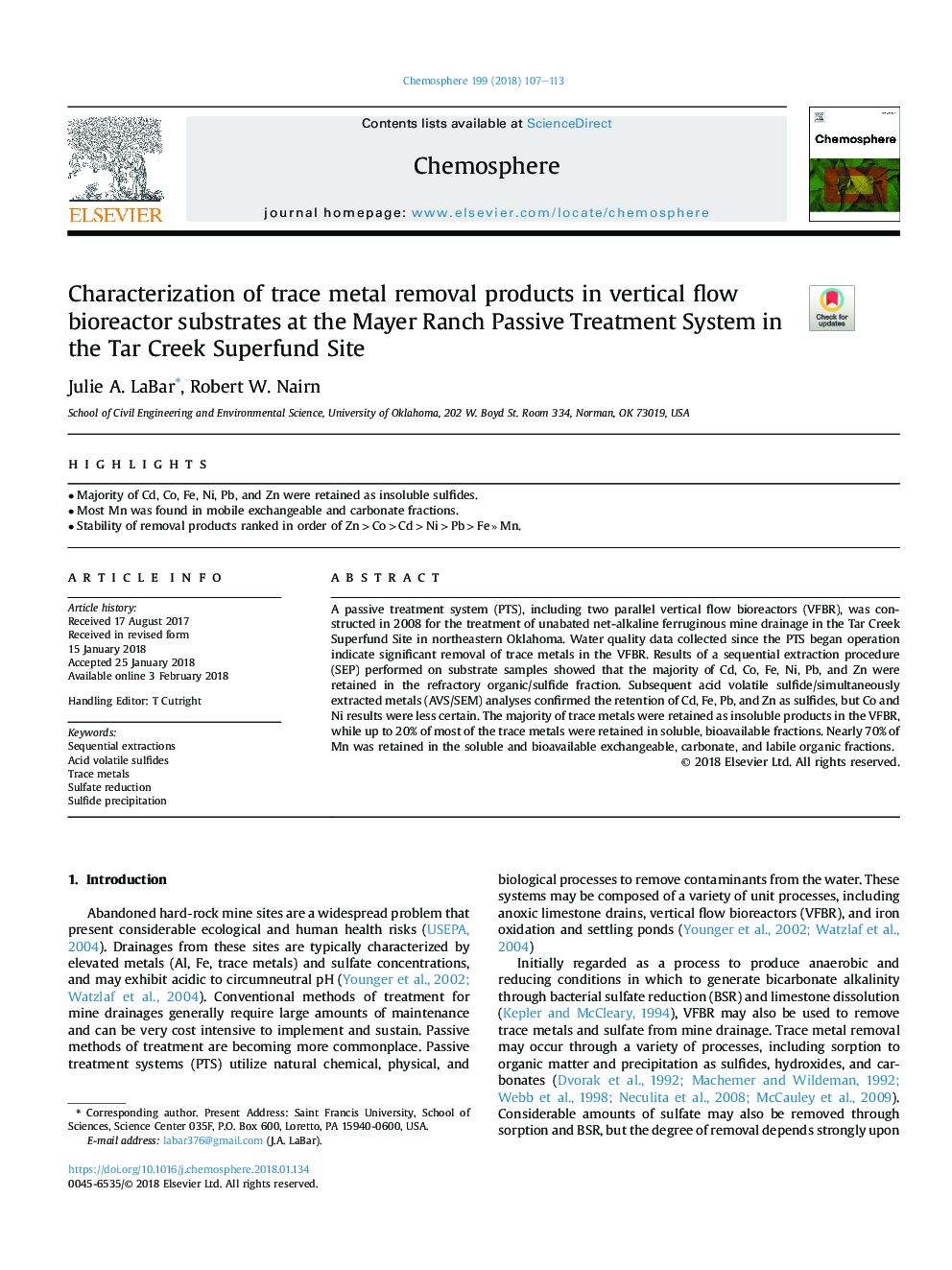| Article ID | Journal | Published Year | Pages | File Type |
|---|---|---|---|---|
| 8851875 | Chemosphere | 2018 | 7 Pages |
Abstract
A passive treatment system (PTS), including two parallel vertical flow bioreactors (VFBR), was constructed in 2008 for the treatment of unabated net-alkaline ferruginous mine drainage in the Tar Creek Superfund Site in northeastern Oklahoma. Water quality data collected since the PTS began operation indicate significant removal of trace metals in the VFBR. Results of a sequential extraction procedure (SEP) performed on substrate samples showed that the majority of Cd, Co, Fe, Ni, Pb, and Zn were retained in the refractory organic/sulfide fraction. Subsequent acid volatile sulfide/simultaneously extracted metals (AVS/SEM) analyses confirmed the retention of Cd, Fe, Pb, and Zn as sulfides, but Co and Ni results were less certain. The majority of trace metals were retained as insoluble products in the VFBR, while up to 20% of most of the trace metals were retained in soluble, bioavailable fractions. Nearly 70% of Mn was retained in the soluble and bioavailable exchangeable, carbonate, and labile organic fractions.
Keywords
Related Topics
Life Sciences
Environmental Science
Environmental Chemistry
Authors
Julie A. LaBar, Robert W. Nairn,
